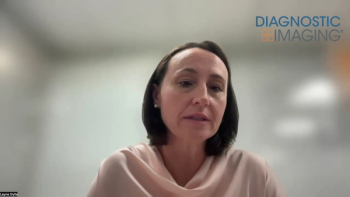
Extra CT Scans Unnecessary for Trauma Patients After Transfers
Repeat computed tomography scans for trauma patients who are transferred are often unnecessary.
CTs are often repeated after trauma patients are transferred to a trauma center, usually because of inadequate image data transfer, according to a
Researchers from Switzerland performed a retrospective study to identify the number of CT scans repeated in acute trauma patients receiving imaging before being referred to a trauma center, to define indications, and to assess radiation doses and costs of repeated CT.
This retrospective study included all adult trauma patients transferred from other hospitals to a level-I trauma center during 2014. Indications for repeated CT scans among adult trauma patients transferred from other hospitals to a level-1 trauma center were categorized into inadequate CT image data transfer, poor image quality, repetition of head CT after head injury together with completion to whole-body CT (WBCT), and follow-up of injury known from previous CT. Radiation doses from repeated CT were determined and costs of the exams were calculated.
The results showed that within one year, 85 of 298 (28.5%) trauma patients were transferred from another hospital. Forty-five (52.9%) were transferred because of severe head injury and 23 (27.1%) because of major body trauma not manageable in the referring hospital. Fourteen (16.5%) were repatriated from a foreign country and three (3.5%) were transferred because the hospital had no ICU-capacity. Of these 85 patients, 74 (87.1%) had repeated CT after transfer: 29 (39.2%) because of inadequate CT data transfer, 24 (32.4%) underwent repetition of head CT with completion to WBCT, and 21 (28.4%) for follow-up of known injury. None occurred because of poor image quality.
The mean time from trauma to admission to our center was significantly shorter in patients who did not require additional CT scans, with a median of 1.5 hours, compared with 3 hours for patients who had repeat CT scans.
The researchers concluded that a considerable number of transferred trauma patients undergo potentially preventable, repeated CT, adding radiation dose to patients and costs to the health care system.
Newsletter
Stay at the forefront of radiology with the Diagnostic Imaging newsletter, delivering the latest news, clinical insights, and imaging advancements for today’s radiologists.



























